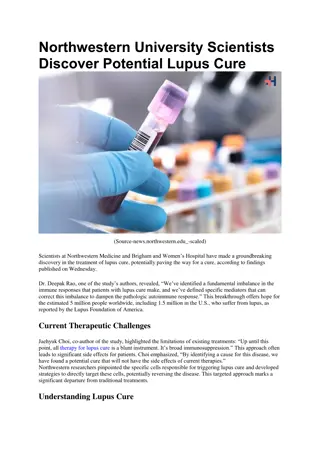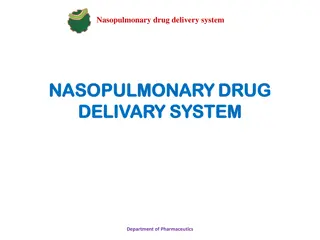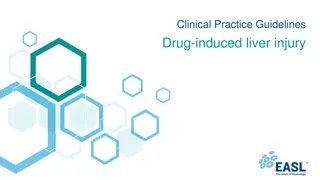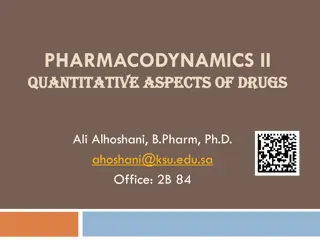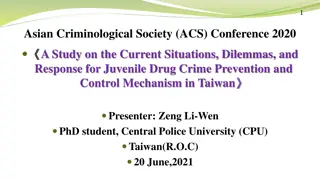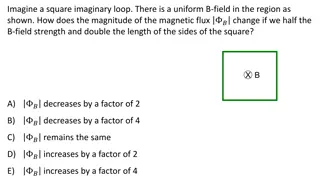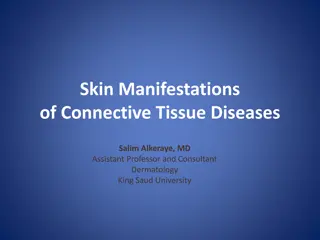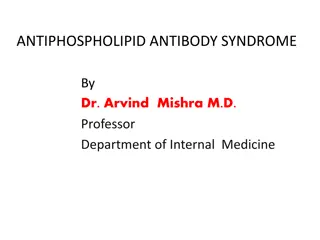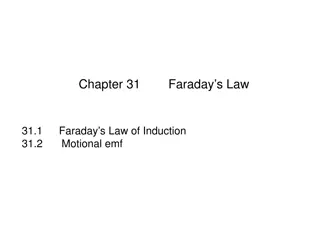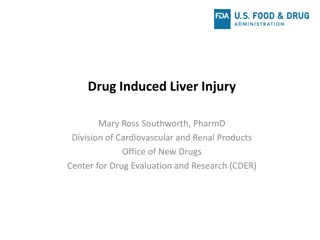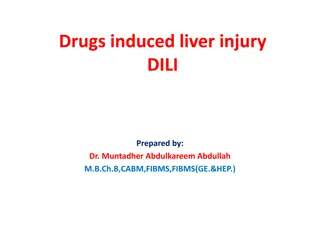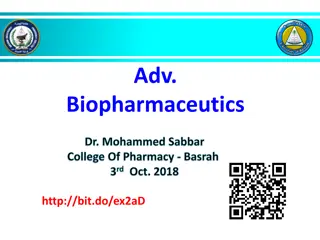Drug-Induced Lupus: Insights and Differences
Drug-Induced Lupus Erythematosus (DILE) is a variant of lupus erythematosus that occurs due to exposure to certain drugs. It typically resolves upon stopping the culprit drug and differs from systemic lupus erythematosus. Male-to-female ratio, clinical features, diagnostic markers, and age of onset vary between DILE and SLE, providing crucial insights for diagnosis and management. Additionally, an overview of Mixed Connective Tissue Disease (MCTD) is provided, highlighting its unique autoantibody pattern and prevalence among women. Explore the diverse clinical manifestations and diagnostic considerations of these autoimmune conditions in this comprehensive guide.
Download Presentation

Please find below an Image/Link to download the presentation.
The content on the website is provided AS IS for your information and personal use only. It may not be sold, licensed, or shared on other websites without obtaining consent from the author.If you encounter any issues during the download, it is possible that the publisher has removed the file from their server.
You are allowed to download the files provided on this website for personal or commercial use, subject to the condition that they are used lawfully. All files are the property of their respective owners.
The content on the website is provided AS IS for your information and personal use only. It may not be sold, licensed, or shared on other websites without obtaining consent from the author.
E N D
Presentation Transcript
Drug-induced lupus erythematosus (DILE) is a variant of lupus erythematosus that resolves within days to months after withdrawal of the culprit drug in a patient with no underlying immune system dysfunction. DILE can arise months to years after exposure to drugs prescribed to treat various medical conditions.
DILE CHLORPROMAZINE HYDRALAZINE ISONIAZID METHYLDOPA MINOCYCLINE PROCAINAMIDE QUINIDINE
Male: Female ratio is equal Renal and CNS abnormalities rare Normal complement and no Anti-dsDNA antibodies Symptoms usually resolve with stopping drug
Findings SLE DILE Average age of onset of 20-30 y Affects blacks more than whites Female-to-male ratio of 9:1 Antihistone antibodies in 50% Anti-dsDNA present in 30-70% C3/C4 levels decrease Cutaneous findings in ~90% Raynaud phenomenon in 50% Antinuclear antibodies in >95% Average age of onset of 50-70 y Affects whites more than blacks Female-to-male ratio of 1:1 Antihistone antibodies in >95% Anti-ss DNA present ,Anti-ds DNA rare C3/C4 levels normal Cutaneous findings in ~25% Raynaud phenomenon in 25% Antinuclear antibodies in >95% CLINICAL LABORATORY
Mixed Connective Tissue Disease The onset of MCTD is characterized by features of SSc SLE IIMs
The autoantibody pattern High-titer, speckled ANA, and U1-RNP (high titer) Lack other specific autoantibodies such as anti-Sm, anti-Sj gren s syndrome antigen B (SS-B), anti-ds DNA, and anti-centromere
MCTD is 15 times more common in women than in men The mean age at diagnosis is 37 years, with a range of 4 to 80 years. There is no apparent racial or ethnic predisposition
The most common manifestations at onset are Raynaud s phenomenon (>90%) Swollen hands with puffy fingers (>70%) Synovitis (>90%) Myositis (>50%)
Gastrointestinal (GI) manifestations of MCTD Similar to those of scleroderma: Upper and lower esophageal sphincter hypotension with gastroesophageal reflux leading to heartburn/dyspepsia (60% 70%) Esophageal dysmotility, and/or stricture with dysphagia (40%) Small bowel and colonic disease is less common in MCTD than in scleroderma Other less common GI complications include Intestinal vasculitis Acute pancreatitis Chronic active hepatitis
CNS manifestations of MCTD Severe CNS involvement is unusual Trigeminal neuralgia (most commonly) Sensorineural hearing loss Seizure and psychosis (rare)
Pulmonary manifestations of MCTD Involvement of the lungs is common (75%) in MCTD, although most patients are asymptomatic Aspiration secondary to esophageal disease contribute to pulmonary disease Up to 25% will develop severe pulmonary fibrosis The most feared complication is PAH( major cause of mortality and morbidity )
Management Active inflammation, such as pleuritis, may respond to nonsteroidal antiinflammatory drugs (NSAIDs) or corticosteroids Other medications such as AZA, MMF, or CYC may be used to treat ILD
Typical laboratory findings in a patient with MCTD Anemia of chronic disease Coombs positivity (in up to 60% of patients, although overt hemolytic anemia is uncommon) Thrombocytopenia is uncommon Elevated ESR due to hypergammaglobulinemia Hypocomplementemia is not associated with any particular clinical manifestation Antibodies against common nuclear antigens (Rare)
U1-RNP U1-RNP is a uridine-rich small nuclear ribonucleoprotein (sn RNP) that consists of U1-RNA and U1-specific polypeptides 70kD, A& C Patients with MCTD form high titers of antibodies against U1-RNP, particularly U1-70kD and U1-RNA, but also polypeptides A& C, producing a high-titer ANA with a speckled pattern Anti-U1-RNP antibodies can be present in other autoimmune diseases such as SLE and SSc, but typically in lower titer



